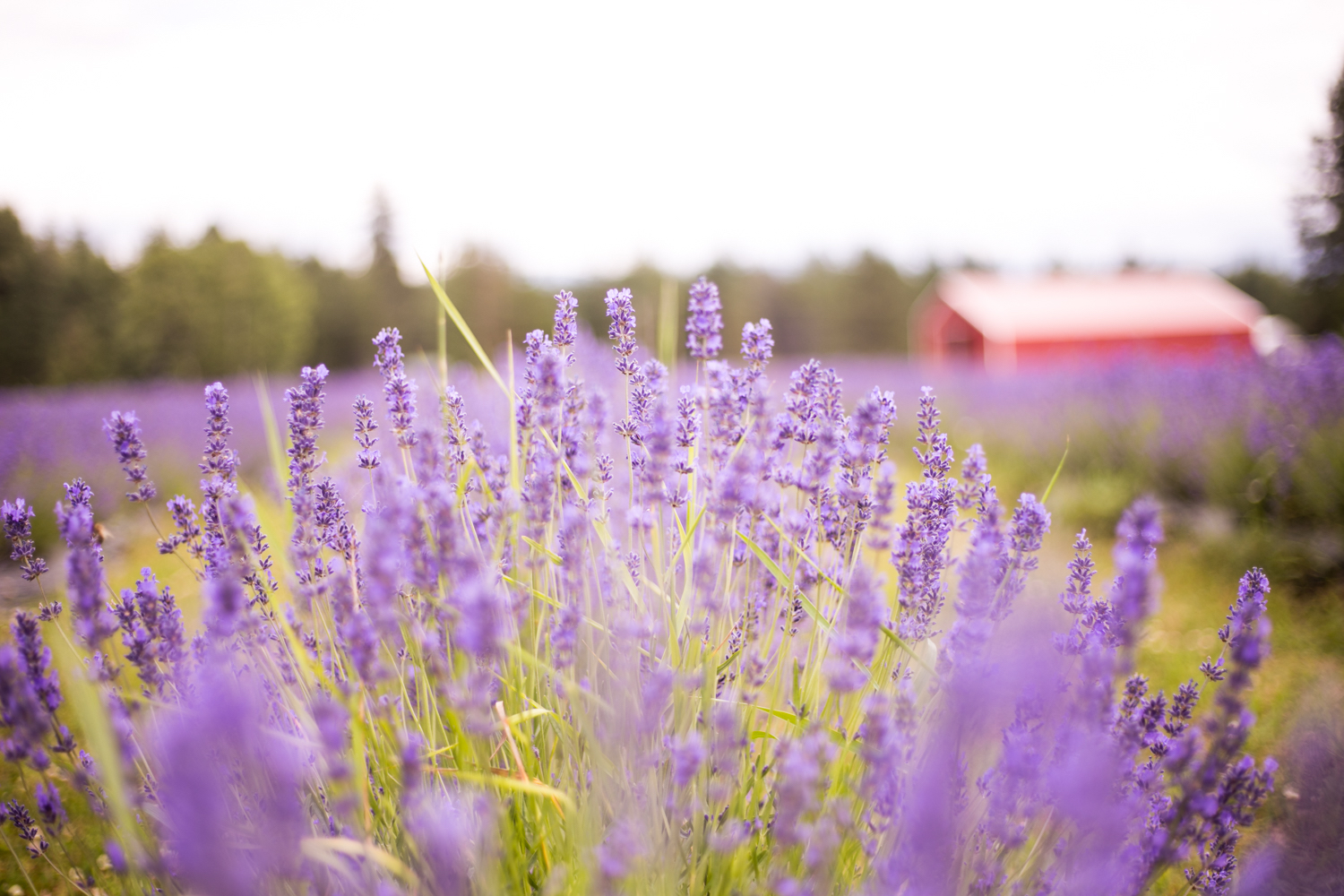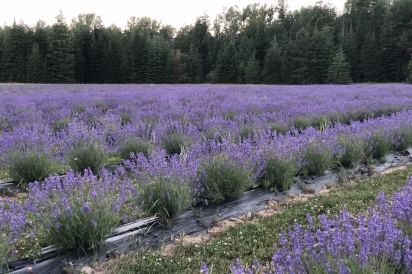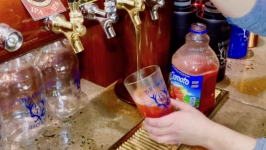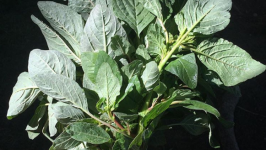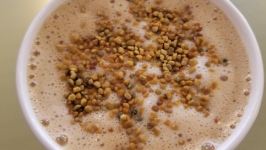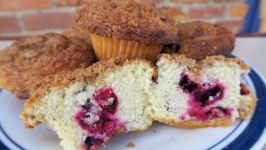Purple Haze
Ah, lavender. The word conjures a vision of hardy stems dotted with clusters of purple flowers and a fragrance both gentle and enduring. People have used the flower of the lavender plant since ancient times to perfume body and bathwater alike. From the Latin lavare, to wash, lavender is even rumored to have endured the millennia inside Egyptian King Tutankhamun’s tomb. More than just making people smell good, however, lavender is beneficial as a pollinator, in both medicinal and culinary applications, and is well-suited to many regions in the Northwest, including Northern Idaho.
In Sagle, just below Sandpoint less than 70 miles south of the Canadian border, Kris McPeek and her husband, Tim, always grew something—food for their family, household herbs—but it wasn’t until their children grew up and moved out that they considered turning their property into Sandpoint Lavender Farm.
Their first step was research.
“You know that’s key,” says Kris McPeek. “You have to spend money and see if it’s something you want to do.”
In addition to working with Jennifer Jensen, extension educator for horticulture and small-acreage farms at the University of Idaho, the McPeeks consulted the Small Business Administration and sought out a consultant who could help them identify what, where and how to plant.
The McPeeks found Victor Gonzalez, who grows lavender in Sequim, Washington. He has done so since 1997 and has been instrumental in making the Sequim Lavender Festival a national event. In addition to products—pet shampoos, soaps, oils, candles, dried lavender— Victor’s Lavender also offers wholesale plants and educational materials, along with on-site consulting for soil preparation and plant selection.
“Lavender likes good drainage,” says McPeek. Their soil had a lot of clay, which is somewhat typical for the region, so they trenched down 18 inches into the soil and amended it with sand and organic matter to create two acres capable of sustaining 4,500 plants.
Sandpoint Lavender Farm grows seven of the more than 400 varieties of lavender—two most common being Angustifolia and Lavandin, according to the U.S. Lavender Growers Association, of which the McPeeks are members.
After harvesting the lavender by hand, the McPeeks distill the Grosso, Folgate and Lavandin varieties into essential oils using one of two 40-gallon copper stills from Portugal. Their Royal Velvet, French Lavender, English Seal and Melissa varieties are typically sold dried or incorporated into sachets and similar products.
Nothing goes to waste during the process, explains McPeek, who also uses the less-intense hydrosol—the infused-water residue left over from the distilling process.
“I’ll take a washcloth and dip it into hydrosol and put it in the dryer,” says McPeek, who appreciates both the direct and indirect culinary benefits of lavender.
McPeek recommends The Art of Cooking with Lavender by Nancy Baggett and appreciates the way the flowers attract bees for their hives.
Lavender typically appears on menus like small bursts of color, ranging from sweet treats to cocktails. Sandpoint-based Panhandle Cone and Coffee combines honey and lavender for one of their seasonal ice cream flavors, while Sweet Peaks, a Montana-based ice cream maker with a location in Coeur d’Alene, has featured a blackberry lavender flavor. The Coeur d’Alene Resort’s annual Food & Wine Festival featured a lavender green tea spritzer, while 315 Martinis and Tapas does a signature Lavender Lemonade cocktail with from-scratch lavender bitters.
Although culinary applications intrigue, lavender is more frequently experienced in more olfactory methods, from bath soaps and pillow sachets to perfumes.
Alternative medicine has embraced lavender, said to support the treating of anxiety and fungal infections.
Young Living, an essential oils company with farms in Africa, Asia, Europe, Australia and the Americas, got its start with a lavender farm in St. Maries, Idaho. Founder D. Gary Young turned to alternative medicines, specifically lavender essential oil, which he describes on his website as fundamental to his his recovery from a logging accident in 1973. Finding the essential oil market somewhat lacking, Young taught himself about the distillation process, eventually purchasing 160 acres in St. Maries. Using plants from Provence, France, he created one of the largest lavender-distilling operations in the United States.
Throughout Idaho lavender grows on farms, from Homedale and Caldwell to Eagle and Idaho Falls. For the McPeeks, lavender provides a source of income from a plant they would enjoy just for its beauty and smell. There’s only one drawback to growing so much of the lovely purple crop, says McPeek:
“I can’t really smell it anymore.”
Sandpoint Lavender Farm | @sandpointlavendarfarm
Sequim Lavender Festival
U.S. Lavender Growers Association
The Art of Cooking with Lavender
Panhandle Cone and Coffee | @panhandleconeandcoffee
Sweet Peaks | @sweatpeaksicecream
Coeur d’Alene Resort’s annual Food & Wine Festival
Young Living | @younglivingessentialoil


